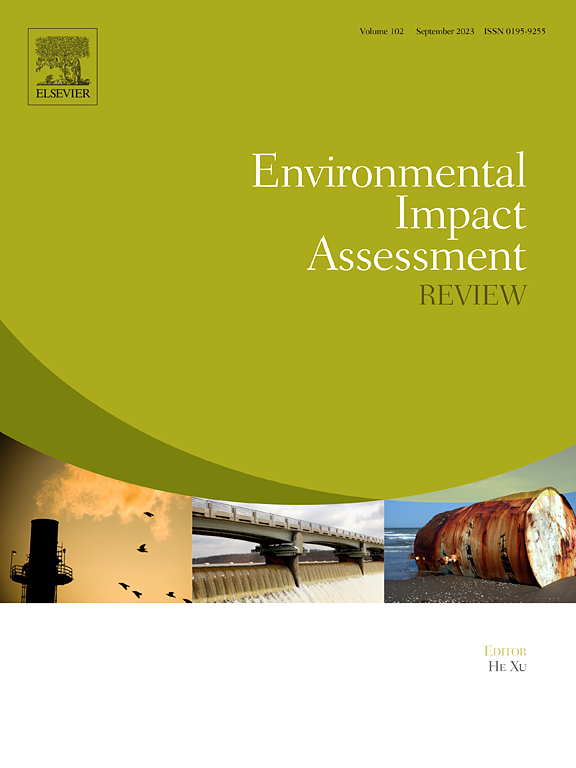Potential economic and environmental impacts of mycotoxins in poultry: A meta-analysis and life cycle assessment approach
IF 9.8
1区 社会学
Q1 ENVIRONMENTAL STUDIES
引用次数: 0
Abstract
Mycotoxins are naturally occurring toxic compounds that frequently contaminate animal feeds. While the effects of mycotoxins on livestock health are extensively studied, comprehensive research quantifying their combined economic and environmental impacts remains limited. This study addresses the research gap by integrating meta-analysis and life cycle assessment (LCA) to evaluate the potential economic and environmental consequences of broiler production using mycotoxin-contaminated feeds, a widespread issue globally. Using a representative broiler farm in the Benelux region of Europe as a model, we observed a 10.8 % reduction in feed utilization efficiency (p < 0.05) when birds consumed feeds contaminated with two or more EU-regulated mycotoxins (deoxynivalenol, zearalenone, fumonisin B1, ochratoxin A, and T-2/HT-2 toxin). For 100,000 birds, this inefficiency translated to 400 t of additional feed annually, costing around €200,000. In order to evaluate the environmental impacts of feed mycotoxin contamination, a comprehensive set of 19 environmental footprint categories was analyzed, including global warming potential, resource use, ecotoxicity, eutrophication, acidification, ozone depletion, and ionizing radiation. The LCA results revealed increased impacts across all categories, with an 8.5 % rise in carbon footprint and significant increases in global warming potential, acidification, and eutrophication due to heightened feed production as well as phosphorus and nitrogen excretion. This study shows that addressing mycotoxin contamination in feed crops such as wheat, maize, and soybean is important for achieving sustainable, low-carbon, and profitable poultry production globally.

家禽真菌毒素的潜在经济和环境影响:荟萃分析和生命周期评估方法
真菌毒素是自然产生的有毒化合物,经常污染动物饲料。虽然真菌毒素对牲畜健康的影响已得到广泛研究,但量化其综合经济和环境影响的综合研究仍然有限。本研究通过整合meta分析和生命周期评估(LCA)来评估肉鸡生产中使用霉菌毒素污染饲料的潜在经济和环境后果,这是一个全球普遍存在的问题,从而弥补了研究空白。以欧洲比荷卢地区一个有代表性的肉鸡养殖场为模型,我们观察到饲料利用效率降低了10.8% (p <;0.05),当鸟类食用被两种或两种以上欧盟规定的真菌毒素(脱氧雪腐菌醇、玉米赤霉烯酮、伏马菌素B1、赭曲霉毒素A和T-2/HT-2毒素)污染的饲料时。对于10万只鸟来说,这种低效率意味着每年要额外增加400吨饲料,成本约为20万欧元。为了评价饲料霉菌毒素污染对环境的影响,对19个环境足迹类别进行了综合分析,包括全球变暖潜势、资源利用、生态毒性、富营养化、酸化、臭氧消耗和电离辐射。LCA的结果显示,所有类别的影响都增加了,碳足迹增加了8.5%,由于饲料产量增加以及磷和氮排泄,全球变暖潜势、酸化和富营养化显著增加。这项研究表明,解决小麦、玉米和大豆等饲料作物中的霉菌毒素污染问题对于实现全球可持续、低碳和有利可图的家禽生产至关重要。
本文章由计算机程序翻译,如有差异,请以英文原文为准。
求助全文
约1分钟内获得全文
求助全文
来源期刊

Environmental Impact Assessment Review
ENVIRONMENTAL STUDIES-
CiteScore
12.60
自引率
10.10%
发文量
200
审稿时长
33 days
期刊介绍:
Environmental Impact Assessment Review is an interdisciplinary journal that serves a global audience of practitioners, policymakers, and academics involved in assessing the environmental impact of policies, projects, processes, and products. The journal focuses on innovative theory and practice in environmental impact assessment (EIA). Papers are expected to present innovative ideas, be topical, and coherent. The journal emphasizes concepts, methods, techniques, approaches, and systems related to EIA theory and practice.
 求助内容:
求助内容: 应助结果提醒方式:
应助结果提醒方式:


